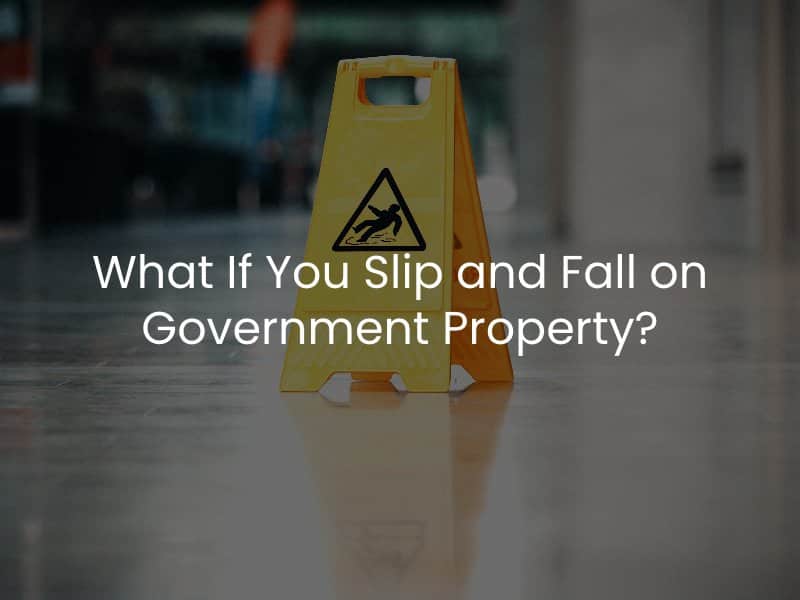What If You Slip and Fall on Government Property?
Government properties are all over the place, and you likely enter government properties without even realizing it. Yes, this includes the obvious places like courthouses, the DMV, tax offices, and police departments. However, other places, like public parks, public swimming pools, and school buildings, are also government property. If you sustain a slip and fall injury while on government property, there are various steps to take to recover compensation for your losses.

Slip and Fall Injuries on Government Property – How They Happen
Slip and fall injuries can occur as a result of water or some other type of liquid on the floor that is not promptly cleaned, snow or ice accumulation that is not tended to, loose carpeting, discarded obstacles in pedestrian pathways, inadequate lighting, and etc.
Compensation Recovery and the California Tort Claims Act
In a traditional slip and fall injury case, the injury victim would typically file a premises liability lawsuit against the property owner. However, filing a lawsuit against a government entity in California is more challenging. Here, we need to turn to the California Tort Claims Act (CTCA). Under this Act, we can see that government entities typically waive their sovereign immunity claims to allow lawsuits for various scenarios. This includes premises liability incidents where the government entity or the employees knew about the dangerous condition and failed to remedy the situation or failed to warn about the hazard.
Individuals could be entitled to compensation for their medical bills, lost income, property damage, and pain and suffering losses if their CTCA case is successful, but there are caveats that make these claims harder than traditional personal injury cases.
First, individuals must give notice of their claim to these state, county, or municipal government agency responsible for the injury, and they must file this notice within six months from the date the injury occurred. This is certainly different from the timeline that most injury cases are required to follow, which is usually two years.
After an initial claim is filed, the government entity usually has 45 days to respond or take action, though this timeframe could be extended. If the claim is rejected, the injury victim can file a petition to move forward with the claim anyway, though we strongly recommend working with a skilled personal injury lawyer who has experienced filing lawsuits against government entities. If the government entity rejects the claim in whole or in part, the claimant will have to file their petition with the court within six months. If the government entity does not respond, the claimant will have a full two years to file the petition in court.
If the court grants the petition to allow the claimant to move forward without a claim requirement, then they must file a lawsuit against the government entity within 30 days. If the court denies the petition, the order of denial could be appealed. If the appeal is successful, the individual can move forward with their claim against the government.
A Sacramento personal injury attorney can help a claimant navigate the complexities of government injury claims, as well as any appeals that become necessary.